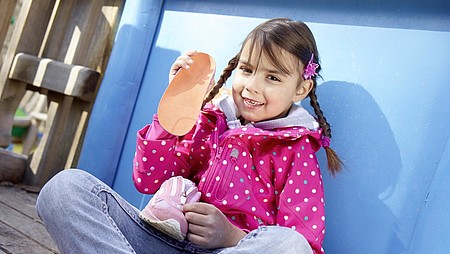Cycling keeps you on the road in everyday life
Cycling is principally suitable for everybody. And the best thing about it: it is kind to the joints and is thus the ideal type of sport, even for people of an advanced age, those who complain of knee problems or those with a pound or two too many on their hips.
No matter whether Dutch, city, trekking or racing bikes – the Germans love their boneshakers. According to a study conducted by the Allgemeine Deutsche Fahrrad-Club e.V [General German Bicycle Club] (source: ADFC, 2011/German language), 41% of Germans ride their bikes several times a week, 15% every day. And understandably so, as cycling can so easily be integrated in everyday life, is environmentally friendly and keeps you fit. Around two thirds use their bikes for shopping or running errands, while 38% cycle to work or their place of education. We'll show you here how to set up your bike properly and prepare to arrive easily at your destination.
Stay fit
Cycling is an endurance sport that stimulates the cardiovascular system and reduces the risk of a heart attack or high blood pressure. Cycling also strengthens the breathing muscles and improves sugar and cholesterol metabolism - and what’s more, it trains our sense of balance and builds up the leg muscles. (source: Techniker Krankenkasse [German health insurance fund]/German language). Calorie expenditure varies depending on body weight, age, degree of difficulty of the trip and whether the wind’s blowing against you. As a rule of thumb: gentle cycling burns about four to five calories a minute. "You burn fat most effectively by choosing a low gear and cycling continually" advises Professor Helmut Lötzerich, deputy director of the Institute for Natural Sports and Ecology at the German Sport University in Cologne.
Good for the soul and well-being
Specialists attribute a massively relaxing effect to cycling "due to its even, cyclical form of movement". It breaks down so-called stressors – sometimes you even develop a feeling of emotional harmony and a positive feeling for your own body after a short distance. And even better, after 30 to 40 minutes endurance activities like cycling, happiness hormones such as endorphin and adrenalin are released – the very best protection against depression and other emotional problems (source: bikeradar.com).
Equipment for cycling
So, we've now really whetted your appetite and you're raring to go? You should make sure you've got the right kit before you set off. As well as a bike, this includes padded cycling shorts, active breathing outer clothing, a tool kit and a helmet. When buying, make sure these have a GS tested seal of approval. Furthermore: take plenty to drink with you – preferably water or fruit juice mixed with sparkling water. Cycling makes you thirsty.
Cycling
Like swimming, cycling has the advantage that one doesn’t have to carry one’s own body weight. This protects the joints. This sport strengthens the cardiovascular system and stimulates fat metabolism. Furthermore, the body’s ability to absorb oxygen is improved. One good co-benefit: Cycling trips are a wonderful way to discover the area.
Safety checks for the bike
If you snooze, you lose – this also applies to your bike. Which is why you should have it checked after the winter break, preferably at a specialist bike repair shop. They will closely inspect the tyres, brakes, gears, chain, nuts and bolts, handlebars, saddle pillar and lights and repair any little defects immediately (source: liv-cycling.com). Just to keep you and the others on the road on the safe side.
Pain-free cycling
Cycling is kind to the body and a relatively safe affair. But you should still take a few precautions to effectively prevent postural problems and pain.
For example, if your feet turn numb while cycling, you should check your footwear. If your feet are in the wrong position while pedalling, you can irritate the nerves and this leads to pins and needles and numbness. A suitable insole in the shoes such as igli Control from medi can help in these cases.
A stiff neck, back pain, numbness in the hands and toes, a sore bottom or knee pain can all come from the wrong handlebars height or a badly positioned saddle. Dr Achim Schmidt, cycling expert at the Sport University in Cologne, recommends: "Set the saddle horizontally and measure the height of the saddle by sitting on the bike and stretching a leg out. Place your foot with the heel on the pedal at the lowest point of the crank turn. The knee should be straight. If you can only just sit on the saddle in this position, it's at the right height". The handlebars are correctly positioned if the back muscles are in pretension, i.e. when the muscles of the back and abdomen are tense. Because this is the only way in which they can stabilise the spinal column and protect against overstrain. The height of the handlebars is different for each type of bike. If you develop pain in the neck, in the shoulders and in the back, you should change the height of the handlebars. To prevent back pain, you should also make sure the sitting position is correct: the pelvis is in the right position if the spinal column is "S"-shaped and forms a natural hollow back (source: liv-cycling.com).
Orthopaedic insoles from medi
Click here for more information about orthopaedic insoles from medi.





